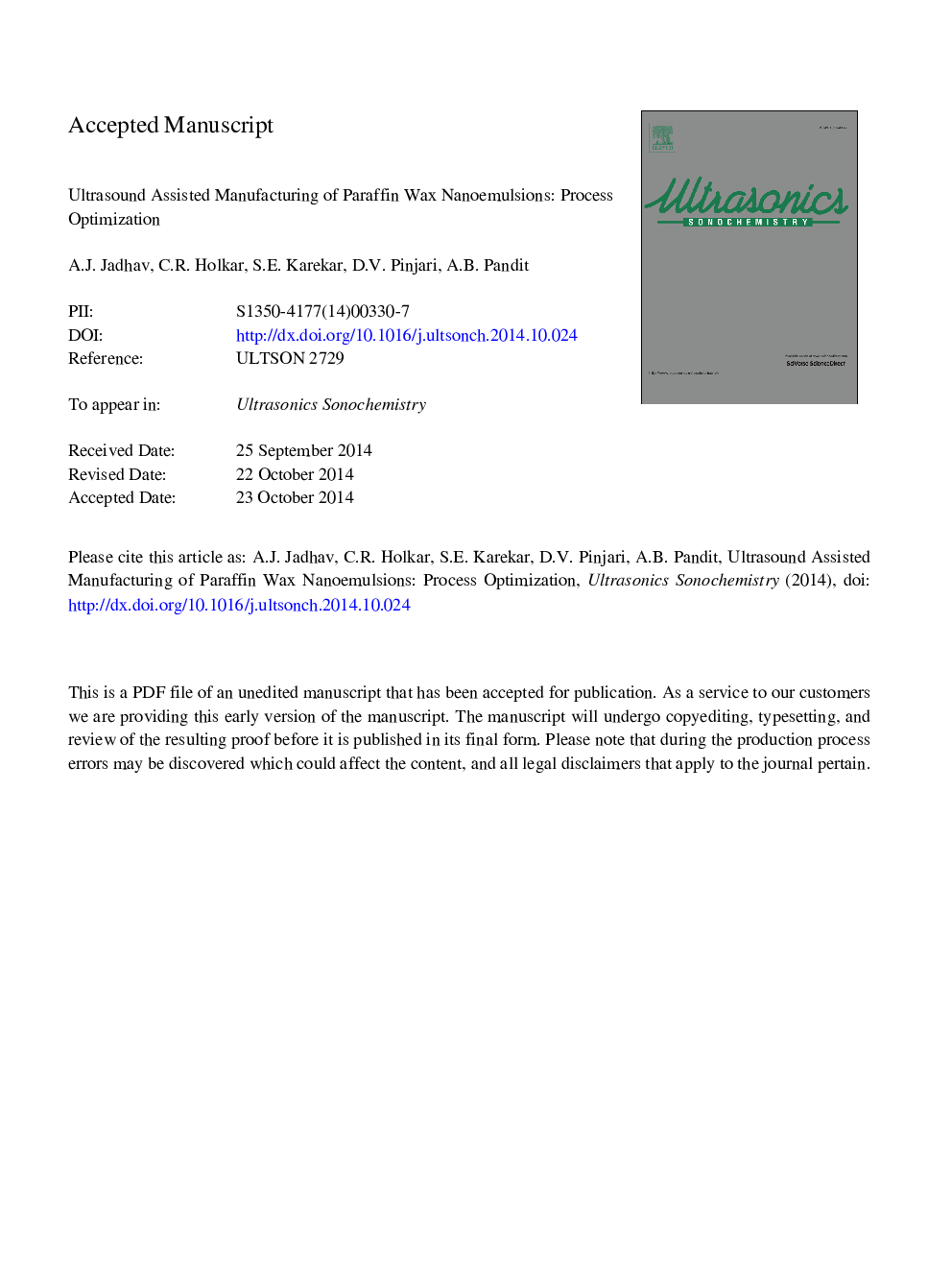| Article ID | Journal | Published Year | Pages | File Type |
|---|---|---|---|---|
| 7704034 | Ultrasonics Sonochemistry | 2015 | 33 Pages |
Abstract
This work reports on the process optimization of ultrasound-assisted, paraffin wax in water nanoemulsions, stabilized by modified sodium dodecyl sulfate (SDS). This work focuses on the optimization of major emulsification process variables including sonication time, applied power and surfactant concentration. The effects of these variables were investigated on the basis of mean droplet diameter and stability of the prepared emulsion. It was found that the stable emulsion with droplet diameters about 160.9Â nm could be formed with the surfactant concentration of 10Â mg/ml and treated at 40% of applied power (power density: 0.61Â W/ml) for 15Â min. Scanning electron microscopy (SEM) was used to study the morphology of the emulsion droplets. The droplets were solid at room temperature, showing bright spots under polarized light and a spherical shape under SEM. The electrophoretic properties of emulsion droplets showed a negative zeta potential due to the adsorption of head sulfate groups of the SDS surfactant. For the sake of comparison, paraffin wax emulsion was prepared via emulsion inversion point method and was checked its intrinsic stability. Visually, it was found that the emulsion get separated/creamed within 30Â min. while the emulsion prepared via ultrasonically is stable for more than 3 months. From this study, it was found that the ultrasound-assisted emulsification process could be successfully used for the preparation of stable paraffin wax nanoemulsions.
Related Topics
Physical Sciences and Engineering
Chemistry
Chemistry (General)
Authors
A.J. Jadhav, C.R. Holkar, S.E. Karekar, D.V. Pinjari, A.B. Pandit,
